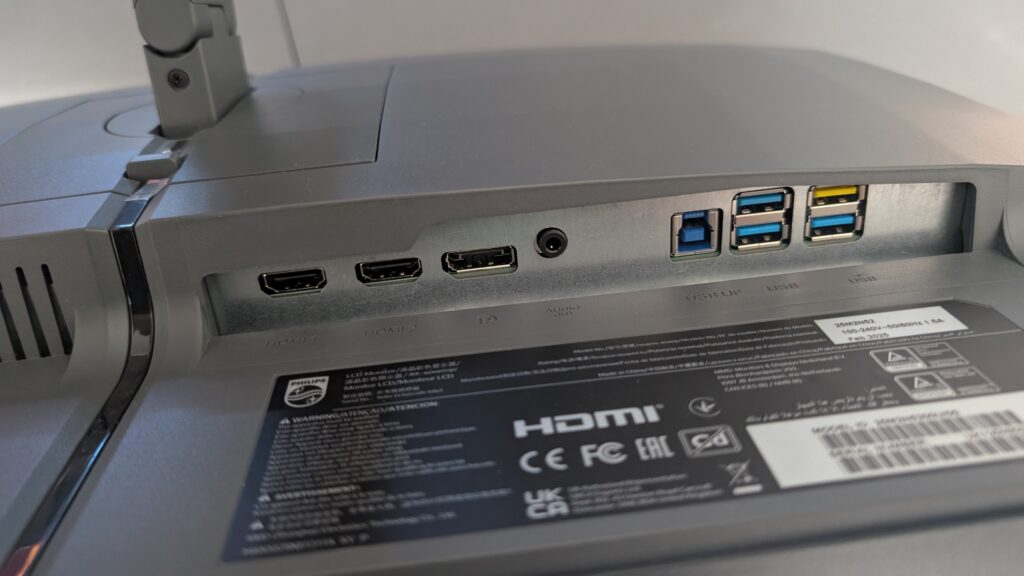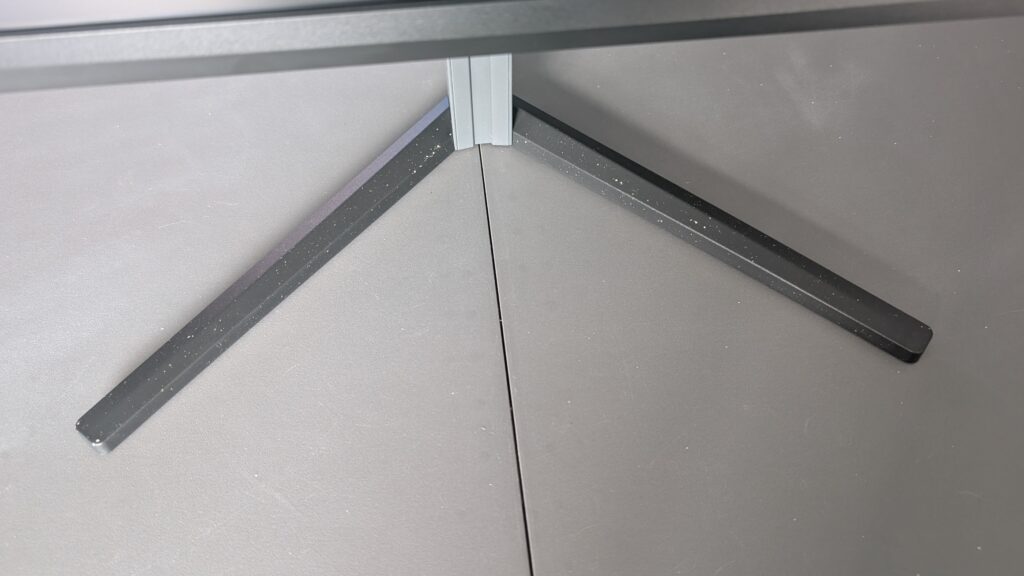Philips has gone full gaming with this one, and I for one am all for it, as I know they produce some decent OLED panels, which we’ve experienced here on the TechNuovo channel in the past… card in the corner. But I was excited to check this one out because of their quality OLED panels, I wanted to see if their proper true gaming panels could compete. Well, let’s talk about it.
It’s called the 25M2N5200U, and it’s a 25-inch, 1080p, 390Hz overclocked refresh rate, IPS panel. I also wanted to point out that there are two versions of this monitor, because if it’s anything like that AOC video I did a while ago, I’m going to be accused many, many times of giving the wrong information. On the Philps website, there’s a 25M2N5200U which is the 390Hz panel, and a 25M2N5200P, which is a 280Hz panel, so please do your own research and buy the right one. We’re talking about the U version in this video. Right, let’s continue. So I suppose it is only a 1080p panel, but of course, driving 390Hz in its overclocked mode isn’t going to be very easy at higher resolutions, especially on eSports titles. Something like Hollow Knight, sure it’ll run VERY smoothly, but for CS2, above 1080p, you’re going to need a beefy PC to keep up with a consistent 390Hz FPS.

However, testing the monitor using my OSRTT Tool brought back some less-than-ideal results while testing its grey-to-grey response times, especially when it came to the percent that each test spent in window, which was incredibly low. First I tested at 390Hz, putting the monitor into its Overdrive Mode, and running its Smart Response in Fast, and it gave me an Average Initial Time of 5.83, though it only spent 6.67 Percent In Window. This didn’t really improve too much more through its Smart Response modes, and at Faster its Initial Time was 4.59 with a 30 Percent In Window, and Fastest, an Initial Time os 3.71 and a 20 Percent In Window. At 300Hz, this was more of the same, though lowering the refresh rate down to 240, in its Fast mode, saw a 4.6 Average Initial Time, and it spent 50 Percent In Window. Still not great, but at least it’s moving in the right direction. Jumping up to Fastest though saw an Average Initial Time of 2.99, which is great, but then it only spent 30 Percent In Window. At 144Hz, Fast Mode, it managed a 5.66 Average Initial Time, but this time spent 73.33 Percent In Window which is a lot better. And diving up to its Fastest mode, saw an Initial Time of 2.98 though it dropped significantly down to 23.33 Percent In Window.
Now this is somewhat frustrating because its best and most consistent grey to grey response time was happening at 144Hz, though this is a 390Hz monitor, which poses a question on why you would run this monitor in 390Hz in the first place. And running a UFO Ghosting test, you’d absolutely see that at 390Hz, the monitor is more than capable of producing a sharp moving image with minimal blurring, though not completely out of the woods. Dropping the refresh rate down to 240Hz proved to still give a decent image, but as you can see, blurring is a bit more consistent, though keep it on Fast Smart Response because going up to Fastest, the inverse ghosting starts to creep in. And at 144Hz, even though your g2g response time is decent, blurring is pretty heavy here and in its Fastest and even Faster Smart Response modes you can see some really heavy inverse ghosting. And because of the lack of consistency in the g2g response times, it’s hard to give a definitive mode on this panel, to give you the best performance.
Running a Datacolor Spyder Elite gamut test gave me a colour gamut of 98% sRGB, 79% AdobeRGB, 79% P3 and 74% NTSC. In its sRGB mode however, it achieved 94% sRGB so go figure, 70% AdobeRGB, 70% P3 and 65% NTSC, so it fared a lot worse for colour with the sRGB mode, including the sRGB gamut itself which was bizarre, so I kept that switched off. And it was the same within the colour accuracy test too. Is its native mode, it achieved an average Delta-E of 1.03 and a maximum of 5.76, but that came down to the blue colours as you can see on screen, and in the sRGB mode it gave an average Delta-E of 1.19 and a maximum of 6.04, so not too much different, but worse in the sRGB image mode. When it came to brightness, the monitor hit a max brightness of 384 nits with a contrast of 790:1, which is lacking somewhat for an IPS display, I must say, and a white point of 8,100, which is terrible.

Colour uniformity at 100% brightness also performed awfully with some real dark spots in the bottom left and right-hand corners, and a really bright spot in the top middle segment, and at 50% brightness, this wasn’t much better with the bottom corners faring much worse. Luminance uniformity at 100% brightness though, fared rather well, only really falling down slightly towards the bottom right-hand side, but not anything too bad really, and at 50% brightness it was rather the same. Let’s just say in the nicest possible way that this monitor hasn’t benchmarked well when it comes to its performance. Though I will say now that for productivity, I didn’t really get on with this monitor at all anyway coming from a 1440p panel before it because of scaling issues with 1080p panels and Davinci Resolve and Photoshop and those kind of things, but a 390Hz, 1080p panel isn’t aimed at people like me who want to do a bit of editing and a bit of productivity. It’s a gaming monitor through and through, and when it comes to playing games, it performed very well. I didn’t notice really in real time, the issues outlined here with the colour uniformity of the panel. Though bleeding in VERY dark environments isn’t exactly controlled very well as seen in this admittedly not very scientific photo of the panel in a dark room.

The monitor is rather plain-looking with minimal branding on the front, which I imagine would suit gamers down to a tee, and there’s also no garish RGB either. It’s a no-frills gaming monitor that actually looks quite nice on the desk, with very small bezels. It’s a grey-like colour which falls in line with the Evnia style. Its stand has that recycled plastic marbled look and the arm at the back has height, swivel and tilt adjustments. It’s got VESA 100 mounting capabilities as seen in the video, and as we’re talking about the rear of the panel, you can find a single DisplayPort 1.4 and two HDMI 2.0 ports for you console gamers. And inside of the OSD, it’s pretty simple to navigate thanks to the joystick on the back, and most notably, you can find all of your gaming features in the second menu, including a crosshair overlay and a boost to the shadows. It also features HDR400, but meh, it’s alright, but there are absolutely better implementations of HDR out there for sure. For media in general though because of that colour accuracy, the panel isn’t bad for things like YouTube and some Netflix during your lunch break if you work from home.
And all of this for the MSRP of £329 here in the UK, which I think for a gaming panel of this calibre is quite the steal. It’s absolutely aimed at the budget-conscious eSports gamer, and notice I said eSports there? It’s not for everyone, especially if you’re more of a single player gamer. Save some cash and get a lesser Hertz panel, or go for a larger 27-32-inch panel. And yes I know in terms of benchmarking this monitor has fallen down quite a bit in colour uniformity, but for a gaming panel, it definitely is something to behold because if you can hit that 390Hz refresh rate consistently. then you’re going to be laughing all the way to the bank on this one. But yeah, it isn’t a panel for productivity, that’s for sure, but a bit of Netflix here or there would be fine. Thanks for watching.
